Anvil of Stars Read online
Page 7
“Make us less dependent, I assume. At any rate, I haven’t designed a plan; we’ll see what they’re up to, and see how well we react. They assume we’re well-trained.”
Kimberly Quartz and her craftmate, Ginny Chocolate, hooted loudly. “Pan must be confident!” Kimberly called out. Martin smiled and lifted both thumbs.
Kai Khosrau, diminutive, with long head and long arms and muscular legs, began to sing the song and a few dozen joined in. The song was a rambling medley of tunes remembered from their youth on Earth and in the Ark, with new words.
Martin let them sing, watching Theresa in her accustomed place outside the cluster, at the rear. Just to be alone with her, nothing else.
Song finished, they climbed into their craft and the hatches smoothed shut. Martin took a seat in the rifle’s black interior, felt the surface of the couch wrap around his legs, the crawl of transparent membrane around his clothes and skin. The membrane connected with air supply intakes and waste removal ducts.
He closed his eyes and took a deep breath. Cool fresh air filled his lungs. A faint green field surrounded his body, leaving arms and head free. Between the membrane and the field, water poured in, making a five-centimeter cushion around his legs and torso. A faint moisture fog rose up briefly around his face, covering the outer surface of the membrane, and almost immediately cleared. The membrane, water, and field protected him from accelerations up to fifty g’s. Anything beyond fifty g’s would require a volumetric field. He had experienced the volumetric fields in training; they were bearable, but not comfortable. At very high acceleration, they controlled motion down to the level of individual molecules.
Those not in ships departed from the hemispheric chamber. Deep bass pounding: air being rapidly pumped from the chamber.
A hatch opened to darkness and oily streamers of light.
They had not been outside the Dawn Treader since leaving the Ark. The interior of the Ship of the Law had been their home, their only solid universe; all else had been projection, simulation, memory and imagination.
Ten craft broke free of their pylons, wobbling as the maneuvering drives adjusted, pale yellow glows pulsing white opposite the direction of travel like captured fireflies. The pylons withdrew to the walls. Sporangia broke loose from the walls and ladder fields reached out from their escorts to lace them tightly to craft hulls.
The craft exited Dawn Treader in close formation, almost touching.
Martin rode his rifle. Through the membrane and a port close to his face, he saw the exterior universe—not in simulation, but in actual far-traveling photons.
The reality was not appreciably different from the high-level simulations; still, he knew it was real, could feel it in the twists and accelerations deep inside his gut as the craft swung about the Dawn Treader’s third homeball.
From within, the Dawn Treader was an all-encompassing universe, with no psychologically real exterior. Seen from outside, close-up, it was simply immense. The scale confused Martin, confined for so long in spaces without infinite views.
The immensity of the Ship of the Law was enhanced by the strangeness of its environment. They still traveled at close to the speed of light; the universe “outside” was still twisted and distorted, with a lateral belt of blue and red stellar luminosity that followed him wherever he flew.
When his bombship rotated, the entire exterior universe seemed to tumble and reform, as if viewed through a madman’s lens. But the children had been trained to recognize these distortions, to orient themselves along axes relative to the Dawn Treader by comparing the distorted frames of reference.
Now, two twenty-eight hour days after deceleration began, they were still traveling at greater than ninety-nine percent of the speed of light. Day by day, as the Ship of the Law slowed, as its tau increased, the stars would correct themselves, the luminous belt would expand to normality, the tunneling effects fore and aft would end.
Martin was eager for that time; to see stars again, as he had seen them from Earth, though not all the same stars, not the same sky.
The small craft aligned themselves. Their pilots saw others as silhouettes against the distorted sky, and communicated by noach.
Martin remembered the lectures of years past, watching his fellows practice different formations, warming up for the exercise itself, which would be like nothing they had experienced before. The defenses could be ancient and straightforward; orbiting sentinels, kinetic energy projectiles, or….
The defenses may be sophisticated beyond anything you have trained for. Advanced civilizations are infinitely surprising in the varieties of their accomplishments, in the expansion of their knowledge, puzzling in their expertise in one area, and their lack in another. Civilizations have personalities, if we may call them such; weaknesses and strengths, talents and blindness. Even a technologically superior civilization has weak points.
That much he had learned during training; it came back with crystal clarity, as if spoken in his ear.
Killing Captain Cook. Guerilla warfare; South-East Asians against B-52s. But theirs would not be a long-term guerilla action. They would lay the seeds of weapons that could not be removed without performing the very actions the weapons themselves were intended for: planet killers.
He saw Theresa’s rifle glinting in the weird light of blue stars emerging from behind the Ship of the Law. Theresa was to take picket duty with five others, reaching out thirty thousand kilometers beyond the Ship of the Law. He watched the rifle dwindle. Flies buzzing around a battleship; powerful flies, but no one could know how well-matched they might be against what was coming.
That was the unanswerable question. There was a very good chance they would encounter a civilization so far advanced that the power within the Ship of the Law would be insignificant.
Martin had had nightmares about what might happen then: would they be captured like animalcules plucked by an eyedropper out of pond water? If the superior intelligence swallows the animalcules, they might cause disease, still might kill; but if the intended victim refuses to swallow, the fighters are isolated, the Ship of the Law is frozen and sectioned and examined, the children are pulled apart cell by cell and studied; harmless, defeated.
Martin banished those thoughts. The exercise was all that mattered for the moment. He strained against the membrane, the layer of water, and the surrounding field. In the actual offensive, as they performed the Job, they would be aided by makers and doers and robot craft not limited by human physiology. But one or more of the children would pull the Trigger. The execution would be performed by the survivors of Earth. That was the Law—while any of the crew remained…
Paola Birdsong and Bonita Imperial Valley escorted a torus of sporangia; in actual offensive action, such a torus could carry a million makers and doers. It was their duty to guard the torus until it was ready to broadcast its contents.
“Defenses have been sighted using statistical scintillation matching,” the mom’s voice announced in his ear. He saw and felt through the rifle’s sensors radiation pulses directed at their position: crude methods but effective. The pulses were absorbed in the Dawn Treader’s skin, but observers beyond the Ship of the Law could see its absorption shadow.
Judgment: the technology was more primitive than theirs, but possibly equal in destructive force, as a crossbow may equal a rifle in killing power.
The formation changed immediately to a protective envelope around the Dawn Treader. Picket craft had made it out to only twenty thousand kilometers, leaving faint trails of reaction mass, particles and radiation that dissipated quickly, but not quickly enough. Small craft like rifles, bombships, and pickets could not use sumps to hide their drives. The Ship of the Law, in effect, was pinpointed at the center of a star of ion traces.
The picket craft veered and the Dawn Treader changed its course abruptly and abandoned the formation. One instant, the Dawn Treader was clearly visible within the formation; the next, it was gone.
There would be hell to pay withi
n the ship; volumetric fields would keep the children still aboard from being smashed to jelly, but the side-effects would be nausea and disorientation.
A weapon was being used against the remaining craft. It was quickly described to him: a hail of anti em needles, visible only through their attrition as they encountered stray hydrogen atoms: sparkles of gamma rays and brilliant white light. Five rifles jaunted into a screen formation, but that was not effective. The five craft—William’s among them—were deactivated, destroyed, to all intents and purposes, for this exercise…And Martin was next.
He felt the voices move into his head. His neurological states accelerated, something he had long since learned to hate; but he was thinking a thousand, ten thousand times faster, as fields created virtual neurons that mimicked his thought patterns. His personality split; he left the old self behind like a shed pupa case.
It seemed entirely too real when light filled all his senses: needles striking chaff. He ejected his chaff and retreated in the direction of the Dawn Treader. Volumetric fields divided him into portions as small as molecules and kept each particle in place; the rifle accelerating at maximum power, five, ten, one hundred, a thousand g’s, darting like a hellborn flea on an undisguised pillar of light, bouncing in and out of the flowers of dying anti em needles.
Paola Birdsong still shepherded the sporangia torus. Bonita Imperial Valley had been deactivated. Through his rifle’s senses he saw three bombships on Paola’s tail, spreading chaff to intersect the needles. They would be destroyed; Paola and the torus might survive. The needles hit the spread chaff. A vicious wash of radiation deactivated the three bombships and damaged Paola’s; crippled, she tried to keep up with the torus. He saw the torus accelerating madly, leaving Paola behind, needles outstripped.
Delivered, the torus was on its own now. He thought of using the Ship of the Law itself, directing it to convert its mass to a neutronium gravity-fuse bomb and head for the likeliest inhabited world, to supplement the torus’ destruction—but the situation was not yet desperate enough for such a suicide…
More needles coming in, floods of them. He was alone, thoughts going over every possibility; out of command, out of touch, simply alone. Just an exercise. Hell of an exercise. Each surviving craft had instructions to make its way to the nearest inhabited bodies and inflict maximum damage.
Kamikazes. He hated the thought of such waste to so little potential effect. The more dangerous choice was to locate the Ship of the Law again, but his craft could not match Dawn Treader for speed. That meant he would have to decide where the ship would go, in its mad course to evade the needles. All the other children would be making similar decisions; most, he suspected, would decide to hunt for the ship, and failing that, to kamikaze.
Effectively, he was no longer Pan—no longer a leader.
He would hunt.
The residue of radiations from intercepted needles left a crazy tangle throughout a billion cubic kilometers of space, the center of the battle. How many other needles—in how many other orbital tracks—were set up for this exercise?
None of the needles are real. None of this is real. It is simulation projected for our eyes only against a real background.
No matter. To lose this exercise so completely would be a disgrace, and he could not stand to see the children disgraced before the moms, with so little time until the real Job began. Martin could not feel his body. His accelerated thought gave him long hours for every breath or pound of heart. The body was separate from him now; his present self existed as a virtual simulacrum, which would re-connect with the physical mind at the end of the exercise.
At this rate, the craft he controlled seemed positively slow and balky. And that was perhaps part of the problem; he was not matched with his capabilities, but outmatched them. He was too high-powered in his head for the weapon he used. He did not need the extra acceleration to contemplate strategy for all the small craft.
He slowed, brought himself to one third and then one quarter his highest rate, adjusted the flow of sensory to match, watching the information integrate again like blocks tumbling to form a conceptual castle, and moved at moderate speed through the debris of battle. No more needles presented themselves; everything was spooky, at peace, but for the aftermath—clouds of debris.
Simulated. Only an exercise. He felt a quick moment of panic, blind fear, not an exercise they caught us while we were out but that made no sense at all.
They were still tendays away from the outer limits of Wormwood. Needles would not orbit in ranked shells out here; the sheer volume of anti-neutronium necessary for such a defense would consume hundreds of suns of mass. He pulled away from the fear.
A feeling of indignation. The children had not known what to expect; no preparation, no battle planning, and that was very unlikely. They had been set up artificially and artificially defeated.
He spotted an active picket: Erin Eire. He pulled up beside her rifle and sent a noach message to her.
“We’ve lost it,” she replied. “I’m just waiting for the call to go back.”
“We have other options,” he said.
“I know. Kamikaze.”
“I mean other options besides that.”
“Name them, Pan.” Her voice was only mildly sarcastic, but it still cut.
He raced through the scenarios they had trained for. “The Killers know we’re here. We’ve exhausted their means of defense right now—no more needles. So we broadcast a noach call and pick a rendezvous.”
She thought about that for a long time. He realized she was not accelerating her mind at all. That angered him.
“All right,” she said.
“Go to speed five on your thoughts,” he instructed.
“I don’t—“
“Go now or I’ll pull you from the exercise. You can ride free.”
Riding free was something he had never threatened before.
“You can’t do that—“
“Try me. Pull up, Erin.”
She said nothing. Then he received a rapid burst of chatter from her. She had complied.
“All right. I’ll send the message.”
He broadcast the code signal. In tenths of a second, eleven active craft replied. Seven of the dead tried to signal, but he ignored them. The active craft met at an assigned point and regrouped.
“It’s jaunted,” Paola said, referring to the Dawn Treader.
A chorus of confused comment followed. Martin ordered cut-off and suggested they all think and offer plans, one by one. “And quickly. We can’t afford to wait minutes out here.”
Only thirteen craft. No fake matter in the craft—total mass: barely fifty tons. Complete conversion to neutronium, converting body mass to neutronium and anti-matter fuel to anti-neutronium, yields a total explosive force barely enough to sear a continent on a small world. It would be something, but…
In another channel of thought, Martin considered long-term guerilla action, but that was quite outside the scope of the exercise. What do the moms want us to do? What will they approve of?
He realized that wasn’t the point. It was easy to forget the moms were not there to be pleased or displeased; they were not human. In one way—the human way—they did not care, had no cares at all. They were simply goal-oriented. He should emulate them; they should all.
He heard Ariel’s voice saying, And then we become the moms, don’t we?
Out of the twelve others, four offered ideas, and eight kept silent. Three of the four ideas echoed what he had already rejected: searching for the Dawn Treader’s energy sumps. Sumps could not be detected from millions of kilometers away, unless one could monitor the local energy of the vacuum, and any number of high-tech processes caused that to fluctuate wildly; a sump could be located if one was right on top of it, within a thousand kilometers or so.
But at that range, energy sumps were dangerous. A hastily-made, newly formed sump could leak bursts of radiation across a light hour of space sufficiently powerful to blind or eve
n take out small craft.
Surprisingly, the fourth idea—a usable one, if not a scorcher—came from Erin Eire. We scatter and conduct reconnaissance around the planet. The Dawn Treader comes looking for us eventually, and we might have information to offer.
That was probably outside the scope of the exercise, but then, so be it. No planet was postulated, none projected either within the craft or by the Ship of the Law, wherever it was; but they could conduct their part of the exercise, and at the very least earn marks for innovation.
“All right,” Martin said. “We go down to the planet.”
“There is no planet!” others chorused.
“Then we make one up. Paola, Erin, it’s a rocky planet without an atmosphere—“
“Heavily defended by radiation and kinetic weapons,” Erin suggested.
“Good…”
“And Paola’s torus is nowhere to be seen,” suggested Jack Sand, usually silent in such interactions.
“All right. So what do we do?”
“We search the entire planet, note their weapon positions…”
“How many do we lose?” Martin asked with a touch of irony.
“It’s my idea,” Erin said. “I’ll volunteer.”
Two others volunteered.
“That should be enough,” Martin said, feeling light-headed. The whole exercise was turning into something crazy; what could he do?
They swept out to take up formations around a theoretical planet, positioning themselves in a sphere roughly ten thousand kilometers in diameter, sweeping in crude arcs to imitate orbits. Martin thought of youthful playtime, now made earnest; this dance of craft that would have dismayed his fifth-grade teachers on Earth, watching the ring-o and dodge-ball games on the playground.
Their wands made pictures of the hypothetical planet, projecting images into the areas usually reserved for their sensor reports. The effect was crude—no real artistry—but in their shame and fervor, somehow convincing. Martin contributed weapons emplacements, dotting the mottled planet floating before him with finger-painted notations of defense and danger. Paola created a geology to match the airless ruined surface, and in quick noach updates, her sketches appeared on the sphere, cold ancient continents, internal heat fled, cracks in crust diving deep to solid cool core.

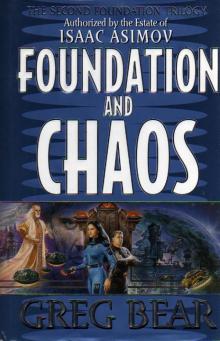 Foundation and Chaos
Foundation and Chaos Halo: Silentium
Halo: Silentium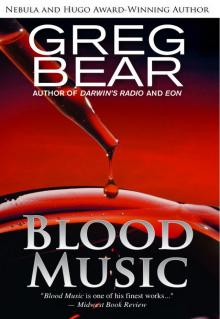 Blood Music
Blood Music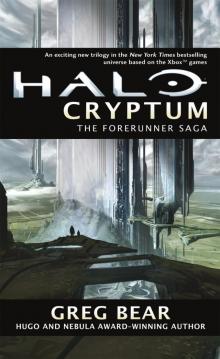 Halo: Cryptum
Halo: Cryptum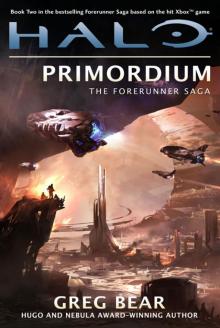 Halo: Primordium
Halo: Primordium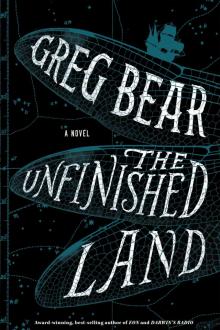 The Unfinished Land
The Unfinished Land Hardfought
Hardfought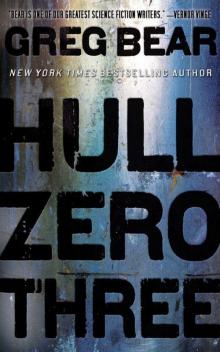 Hull Zero Three
Hull Zero Three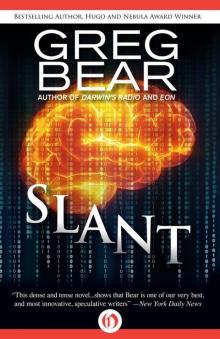 Slant
Slant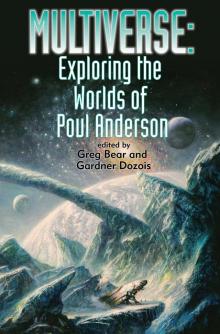 Multiverse: Exploring the Worlds of Poul Anderson
Multiverse: Exploring the Worlds of Poul Anderson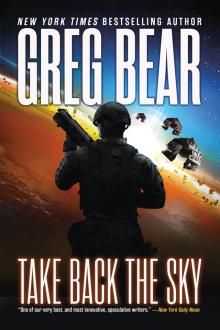 Take Back the Sky
Take Back the Sky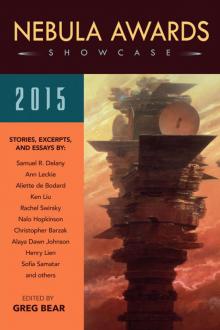 Nebula Awards Showcase 2015
Nebula Awards Showcase 2015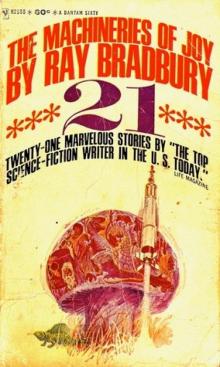 Machineries Of Joy
Machineries Of Joy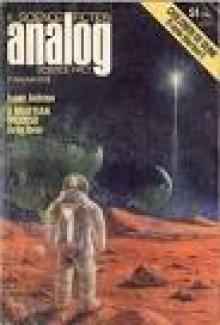 A Martian Ricorso
A Martian Ricorso Eternity
Eternity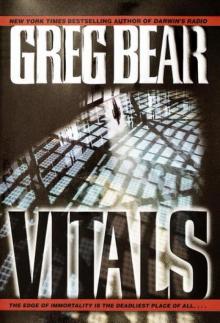 Vitals
Vitals The Infinity Concerto
The Infinity Concerto Beyond the Farthest Suns
Beyond the Farthest Suns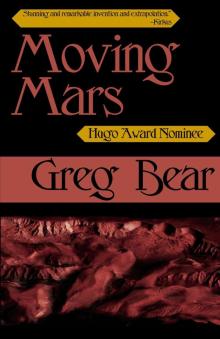 Moving Mars
Moving Mars Quantico
Quantico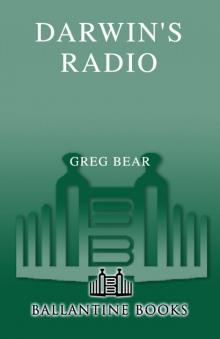 Darwin's Radio
Darwin's Radio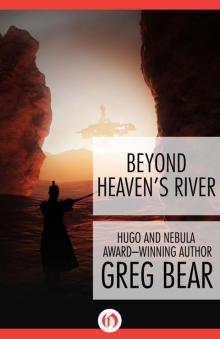 Beyond Heaven's River
Beyond Heaven's River Star Wars - Rogue Planet
Star Wars - Rogue Planet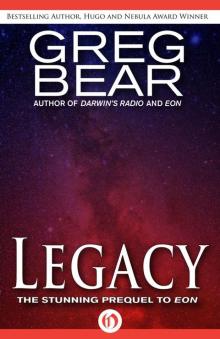 Legacy (Eon, 1)
Legacy (Eon, 1)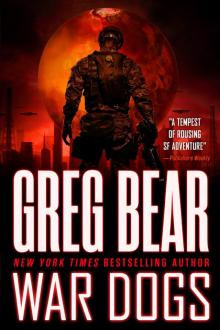 War Dogs: Ares Rising
War Dogs: Ares Rising Sisters
Sisters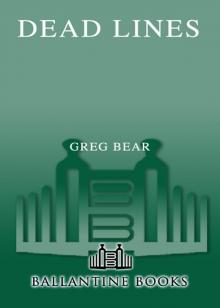 Dead Lines
Dead Lines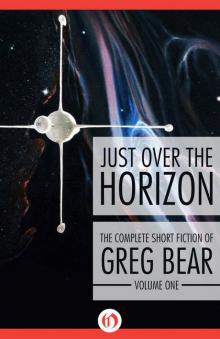 Just Over the Horizon (The Complete Short Fiction of Greg Bear Book 1)
Just Over the Horizon (The Complete Short Fiction of Greg Bear Book 1) Eon (Eon, 2)
Eon (Eon, 2) Venging
Venging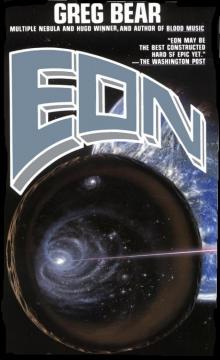 Eon
Eon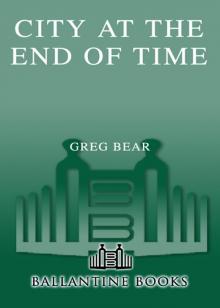 City at the End of Time
City at the End of Time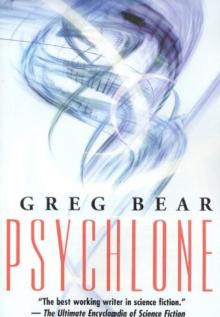 Psychlone
Psychlone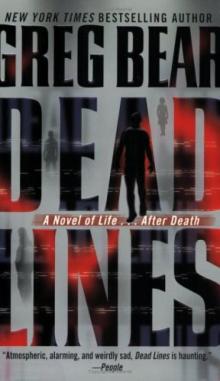 Dead Lines, A Novel of Life... After Death
Dead Lines, A Novel of Life... After Death Eternity (Eon, 3)
Eternity (Eon, 3)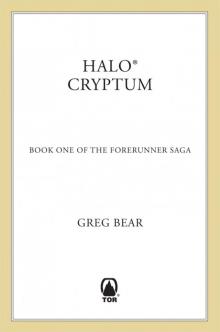 Cryptum
Cryptum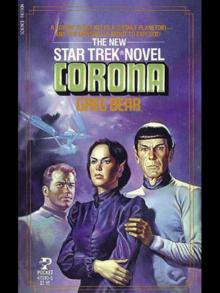 Corona
Corona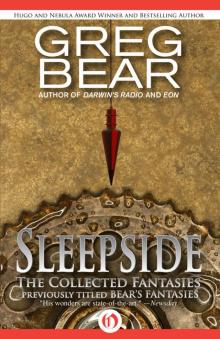 Sleepside: The Collected Fantasies
Sleepside: The Collected Fantasies Women in Deep Time
Women in Deep Time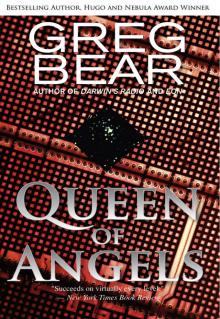 Queen of Angels
Queen of Angels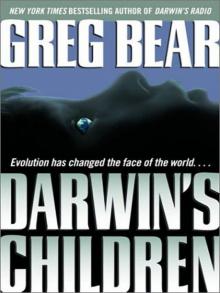 Darwin's Children
Darwin's Children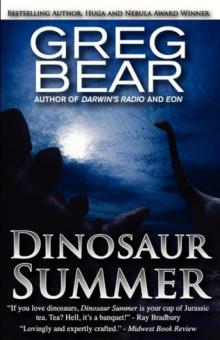 Dinosaur Summer
Dinosaur Summer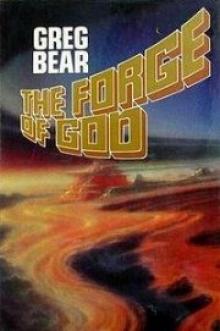 The Forge of God tfog-1
The Forge of God tfog-1 Foundation and Chaos f-9
Foundation and Chaos f-9 Star Wars: Rogue Planet
Star Wars: Rogue Planet The Forge of God
The Forge of God Mariposa
Mariposa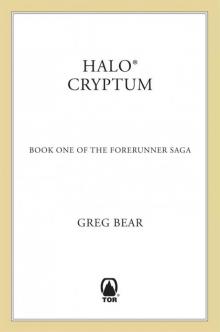 Halo: Cryptum: Book One of the Forerunner Saga
Halo: Cryptum: Book One of the Forerunner Saga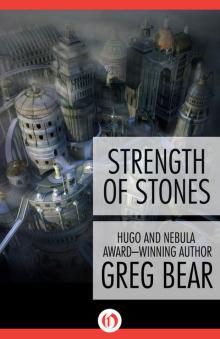 Strength of Stones
Strength of Stones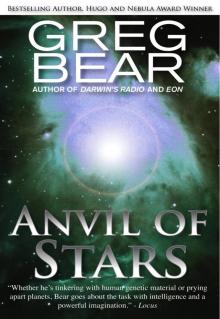 Anvil of Stars
Anvil of Stars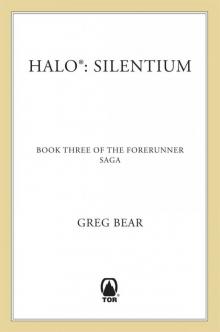 B00AQUQDQO EBOK
B00AQUQDQO EBOK Anvil of Stars tfog-2
Anvil of Stars tfog-2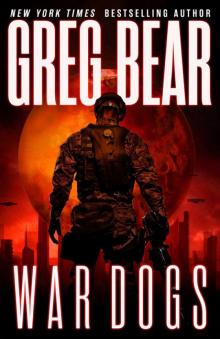 Ares Rising 1: War Dogs
Ares Rising 1: War Dogs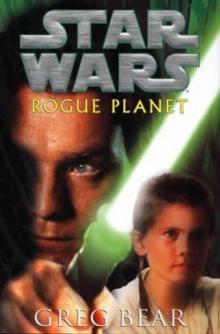 Rogue Planet (star wars)
Rogue Planet (star wars) The Machineries of Joy
The Machineries of Joy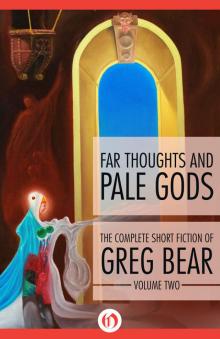 Far Thoughts and Pale Gods
Far Thoughts and Pale Gods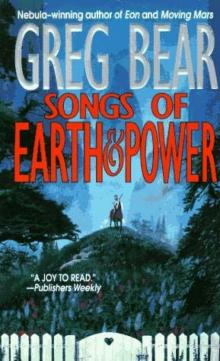 Songs of Earth and Power Omnibus
Songs of Earth and Power Omnibus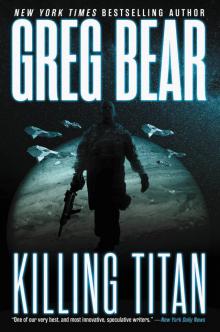 Killing Titan
Killing Titan Darwin's Radio d-1
Darwin's Radio d-1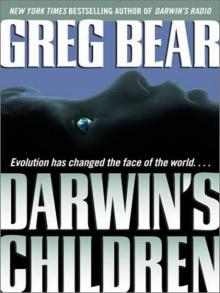 Darwin's Children d-2
Darwin's Children d-2